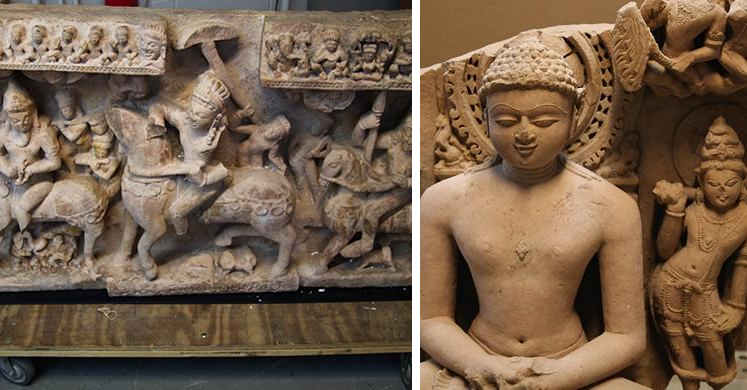Law & Politics
New York Antiquities Dealer Charged With Trafficking Looted Artifacts
Nancy Wiener is accused of falsifying documents and concealing physical evidence of looting.

Nancy Wiener is accused of falsifying documents and concealing physical evidence of looting.

New York antiquities dealer Nancy Wiener was arrested yesterday, December 21, in Manhattan, on charges of possessing stolen property and conspiring to buy and sell looted antiquities from East Asia since at least 1999, the New York Times reports. Her lawyer says she “surrendered voluntarily.”
The proprietor of the eponymous Upper East Side gallery was arraigned at Manhattan Criminal Court and posted $25,000 in bail, but stands accused of selling objects she knew were stolen to Christie’s and Sotheby’s as well as private collectors and institutions. A criminal complaint filed by the Manhattan district attorney’s office claims she provided the antiquities with false paperwork, and had them cleaned to conceal that they had been looted.
Wiener’s gallery deals with Indian, Southeast Asian, and Himalayan art, jewelry, and decorative arts. Its website reads, “Nancy Wiener has maintained the highest level of artistic integrity for nearly three decades.” Nancy inherited the business from her mother, Doris, who died in 2011.
The mother and daughter were key in creating a market for Southeast Asian art in New York, dealing to the likes of John D. Rockefeller, Igor Stravinsky, and Jacqueline Kennedy, besides museums like the Metropolitan Museum of Art and Asia Society in New York, the Art Institute of Chicago, and other institutions around the world.
Despite a prestigious list of clients, Wiener’s reputation is not spotless. In 2015, India declared the Kushana Seated Buddha—sold by Wiener in 2007 to the National Gallery of Australia—looted. She reimbursed the museum $1.08 million, in accordance with a guarantee of the piece’s authenticity and provenance, which required reimbursement if either were called into legal question.
In March, the NYT reported an initial raid on the Nancy Wiener Gallery, in which three objects valued at a total $1 million were seized.
The dealer is now accused of disposing of records of antiquities in the gallery’s holdings, inherited from her mother in 2011. Prosecutors say she falsified new provenances for hundreds of works, 380 of which were sold at Christie’s in 2012 for a total $12.8 million.
Besides arranging false papers for these and other works, Wiener is also accused of having items—like a $500,000 bronze Buddha—restored to conceal signs of illegal excavations, like shovel marks. The aforementioned Buddha was seized in the March raid, while affixed with a selling price of $1.5 million.
Another example, described by the Wall Street Journal, cites a Sotheby’s employee noting cracks on a Cambodian Shiva statue, bought by Wiener and another dealer in 2008 for $250,000, “dressed up with paint splatters to mask repairs” from looting damage. Regardless, it sold through the auction house for $578,500.
The WSJ notes that the arrest comes as part of the US federal investigation Operation Hidden Idol, which has been tracking down antiquities smuggled into the country by the New York dealer Subhash Kapoor. Kapoor is currently awaiting trial in Chennai, India, for allegedly heading a $100 million international smuggling ring, bringing 2,622 stolen objects to the US. Wiener was allegedly in possession of some of Kapoor’s stolen Indian antiquities.